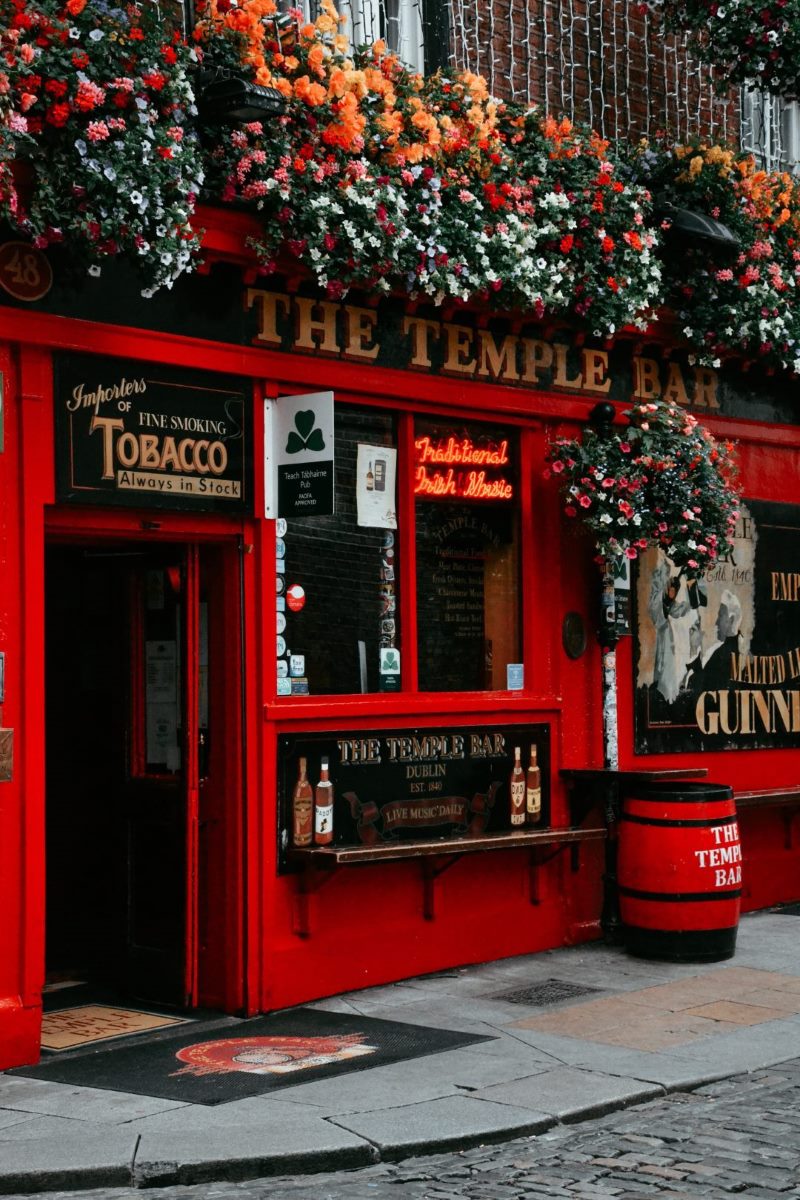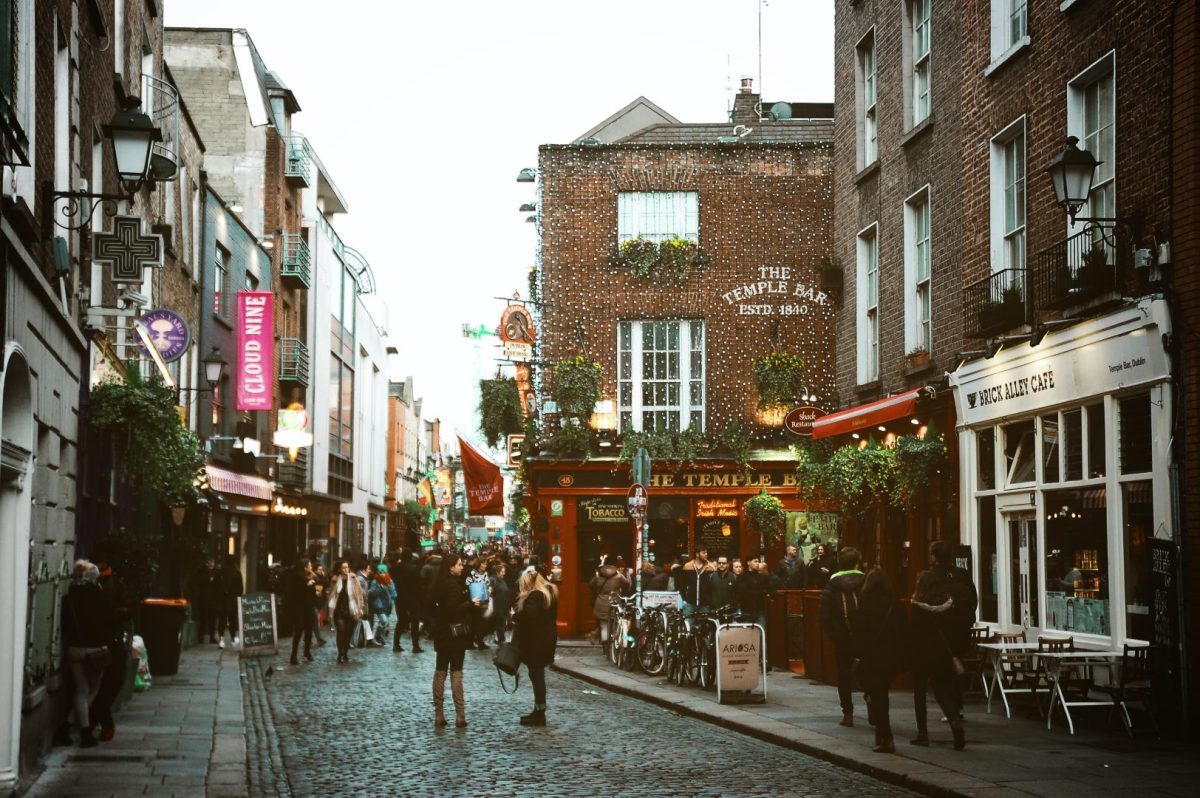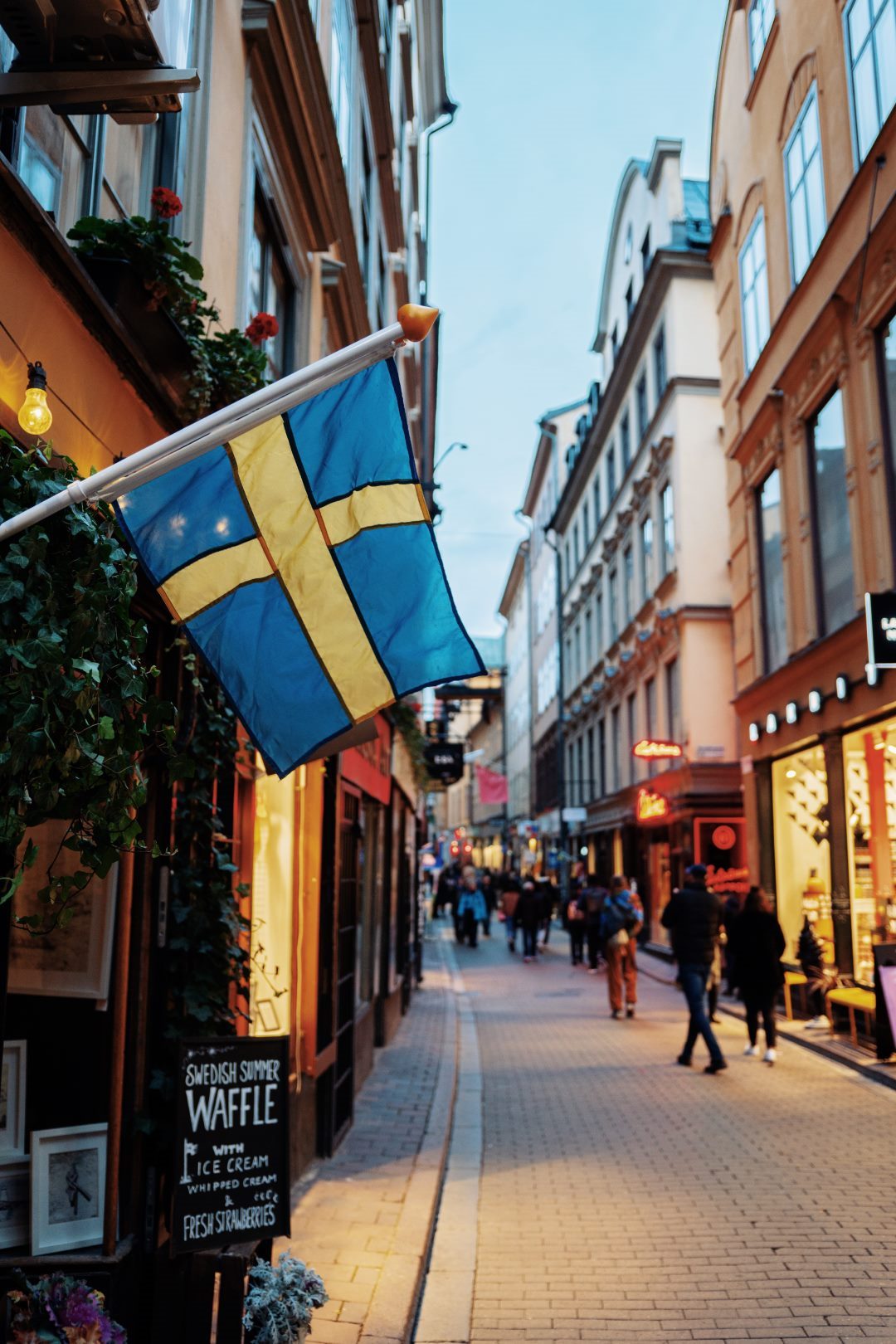How to Plan Your North Quay Ghost Walk in Dublin
Dublin is a city with a long and complex history, filled with stories of kings, wars, tragedies, and, of course, ghosts. If you want to experience the spooky side of the city, the North Quay Ghost Walk is a perfect choice. This walking tour takes you on a journey through the medieval Oxmantown district, where you will see former Viking enclaves, haunted houses, and even the site of an apparition of the Virgin Mary. Led by an expert guide, this tour is both informative and spine-tingling. Here’s how to plan your North Quay Ghost Walk in Dublin:Experience
The North Quay Ghost Walk is a two-hour walking tour that takes you through some of the most haunted places in Dublin. You will explore the medieval Oxmantown district, where you will see the site of Saint Mary’s Abbey, one of the most powerful Irish monastic settlements in medieval times. You will also visit Croppie’s Acre, a park that is said to be haunted by the ghosts of rebels who were executed there in the 18th century. Other highlights of the tour include the site of the two most haunted houses in Dublin, as well as the spot where the Virgin Mary is said to have appeared in the 21st century.Highlights
The North Quay Ghost Walk is a unique and unforgettable experience that will take you to some of the spookiest places in Dublin. Some of the highlights of this tour include:- Exploring the medieval Oxmantown district
- Seeing the former Viking enclaves
- Visiting the site of Saint Mary’s Abbey
- Walking down Hendrick Street, the site of two of the most haunted houses in Dublin
- Learning about Scaldbrother, the infamous medieval thief
- Visiting Croppie’s Acre, which is said to be haunted by the ghosts of executed rebels
- Seeing the spot where the Virgin Mary is said to have appeared in the 21st century
- Enjoying a spooky and informative tour led by an expert guide
How to Book
Booking the North Quay Ghost Walk is easy. Just go to this link and follow the instructions to reserve your spot. The tour costs €20 per person and lasts for two hours. It is recommended that you book in advance, as spaces can fill up quickly.What to Wear
The North Quay Ghost Walk is a walking tour, so it is important to wear comfortable shoes. The tour takes place in the evening, so it can get chilly, especially in the colder months. Be sure to dress appropriately for the weather.What to Bring
There are no specific items that you need to bring on the North Quay Ghost Walk, but it is always a good idea to bring a bottle of water and a camera. You never know what kind of spooky sights you might see, and you’ll want to capture them for posterity.Tour Schedule
The North Quay Ghost Walk takes place every evening at 7 pm, rain or shine. The meeting point is at the James Joyce statue in North Earl Street, and the tour lasts for approximately two hours.Book Your Tour Now
The North Quay Ghost Walk is an exciting and spooky way to explore the haunted history of Dublin’s Oxmantown district. With an expert guide leading the way, you’ll see some of the most haunted places in the city and learn about the stories and legends behind them. So why not book your spot today and experience the spine-tingling thrill of the North Quay Ghost Walk? Don’t forget to dress warmly, bring your camera, and get ready for a night you’ll never forget.
Frequently Asked Questions About Dublin
Dublin is a vibrant and historic city with plenty to offer visitors, from world-famous landmarks to trendy bars and restaurants. Whether it’s your first time visiting or you’re a seasoned traveler, you may have some questions about what to expect during your time in Dublin. Here are some frequently asked questions and answers to help you plan your trip!1. What is the best time of year to visit Dublin?
The best time to visit Dublin depends on what you’re looking for. The busiest tourist season is during the summer months from June to August when the weather is generally mild and the days are long. However, this is also the most expensive time to visit, and many attractions can be crowded with long lines. Spring and fall are quieter times to visit when there are fewer crowds, and the weather is still relatively mild. If you’re looking for more budget-friendly options, winter can be a great time to visit, although the weather can be quite chilly.2. What are some must-see attractions in Dublin?
Dublin is home to many world-famous attractions, including:- Guinness Storehouse – Learn about the history of the famous Irish beer and enjoy stunning views of the city from the Gravity Bar.
- Trinity College and the Book of Kells – Visit one of the oldest universities in Europe and view the famous illuminated manuscript from the 9th century.
- Dublin Castle – Explore the history of the city and see the state apartments used by Irish presidents.
- St. Patrick’s Cathedral – This stunning cathedral has been a site of Christian worship for over 800 years.
- Kilmainham Gaol – Learn about the history of Ireland’s struggle for independence by touring this former prison.
3. How do I get around Dublin?
Dublin has many transportation options for visitors. The easiest and most convenient way to get around the city is by using the public bus system or by taking a taxi. The Dublin Bus system has an extensive network of routes throughout the city and offers a Leap Card, which allows for discounted fares. Additionally, Dublin has a tram system known as the Luas, which serves the city and the surrounding suburbs. Bikes can also be rented through Dublinbikes, which has over 100 stations throughout the city.4. What are some traditional Irish dishes to try while in Dublin?
Dublin has a rich culinary tradition, with many delicious dishes to try. Some traditional dishes include:- Irish Stew – A hearty stew made with lamb or beef, potatoes, and other vegetables.
- Coddle – A stew made with sausages, bacon, and potatoes.
- Boxty – A type of potato pancake served with a variety of fillings, such as bacon or sautéed mushrooms.
- Colcannon – A dish made with mashed potatoes and kale or cabbage.
- Soda Bread – A type of bread made with flour, salt, baking soda, and buttermilk.
5. Are there any cultural events or festivals in Dublin?
Dublin is host to many cultural events and festivals throughout the year. Some of the most popular events include:- St. Patrick’s Festival – This festival celebrates the patron saint of Ireland and takes place every March.
- Bloomsday – A celebration of James Joyce’s novel Ulysses, which takes place every June 16th in Dublin.
- Irish Film Institute Documentary Festival – A documentary film festival that takes place every September at the Irish Film Institute in Dublin.
- International Literature Festival Dublin – A celebration of literature that takes place every May at various venues throughout the city.
- The Dublin Fringe Festival – An annual arts festival that takes place every September and features a variety of performances in theater, music, comedy, and more.
6. Can I use my credit cards in Dublin?
Most businesses in Dublin accept credit and debit cards, although you may want to carry some cash with you for smaller purchases. Visa and Mastercard are widely accepted, but American Express and Discover may not be accepted everywhere. It’s always a good idea to notify your bank or credit card company before traveling to Dublin to avoid any issues with card usage while abroad.7. What should I pack for my trip to Dublin?
Dublin has a temperate climate with rain throughout the year. You’ll want to pack layers and comfortable walking shoes, as many of the city’s attractions are within walking distance. An umbrella or raincoat is also a good idea, as rain showers can occur at any time. Lastly, don’t forget to bring a converter if you’re traveling from a country with different electrical outlets.8. Are there any safety concerns in Dublin?
Dublin is generally a safe city for visitors, but it’s always important to take precautions when traveling. Petty crime such as pickpocketing and purse-snatching can occur in crowded areas, so be sure to keep your valuables secure. Additionally, it’s a good idea to stay in well-lit areas at night and to avoid walking alone in unfamiliar areas.9. What is the nightlife like in Dublin?
Dublin is known for its vibrant nightlife. The city has a wide variety of bars, clubs, and live music venues to suit all tastes. Some of the most popular areas for nightlife include:- Temple Bar – This bustling area is known for its lively pubs and late-night party scene.
- St. Stephen’s Green – This neighborhood has a more upscale vibe with trendy bars and high-end restaurants.
- The Liberties – This historic area has a mix of traditional pubs and trendy nightlife spots.
- South William Street – This area is known for its many bars and nightclubs that attract a younger crowd.
10. What are some day trips I can take from Dublin?
Dublin is a great base for exploring other parts of Ireland, and there are many day trip options to choose from. Some popular destinations include:- Cliffs of Moher – These stunning cliffs are located on the western coast of Ireland and are one of the country’s most popular natural attractions.
- Giant’s Causeway – This natural wonder is located in Northern Ireland and features thousands of interlocking basalt columns that create a unique landscape.
- Kilkenny – A charming medieval town located in the southeast of Ireland and known for its well-preserved architecture and historic castle.
- Wicklow Mountains National Park – This national park is located just south of Dublin and features stunning scenery and hiking trails.
- The Ring of Kerry – A scenic driving route that takes visitors around the southwest coast of Ireland, passing through picturesque towns and stunning landscapes.
Book Your Tour Now
Dublin is a city full of history, culture, and excitement, and there’s always something new to discover. Whether you’re interested in exploring the city’s rich literary tradition, enjoying a pint of Guinness in a traditional pub, or taking in the stunning natural beauty of Ireland, Dublin has something to offer everyone. Use this guide as a starting point for planning your trip and don’t hesitate to reach out to locals for recommendations and advice.
How to spend your time as a tourist in Dublin
When it comes to visiting Dublin, there are countless things to see and do. Whether you’re interested in history, culture, or just having a good time, this city has something for everyone. In this guide, we’ll show you some of the best ways to make the most of your time as a tourist in Dublin.1. Explore Dublin’s rich history
Dublin is an ancient city with a rich and fascinating history. One of the best ways to explore this history is by visiting some of the city’s many museums and historical sites.1.1 Visit the Guinness Storehouse
One of the most popular tourist destinations in Dublin is the Guinness Storehouse. This seven-story building takes you through the history and brewing process of Ireland’s most famous beer, ending with a complimentary pint at the Gravity Bar on the rooftop.1.2 Discover ancient Irish artifacts at the National Museum of Ireland Archaeology
The National Museum of Ireland Archaeology contains one of the world’s largest collections of Celtic and medieval artifacts dating back to prehistoric times. It’s a must-visit for anyone interested in Irish history.1.3 Visit Dublin Castle
Dublin Castle, located in the heart of Dublin, is a medieval castle that served as the seat of the British government in Ireland until 1922. Today, it’s a popular tourist destination with guided tours that take you through the castle’s history and architecture.2. Enjoy the traditional Irish Music and Dance
Dublin is home to some of the best traditional Irish music and dance in the world. Whether you’re a fan of the fiddle or the bodhrán (a traditional Irish drum), there are plenty of places to experience the vibrant music scene.2.1 Catch a Traditional Irish Music Session
Head to one of Dublin’s many pubs and you might find a group of musicians playing traditional Irish music, called a “session.” Be sure to bring your dancing shoes as the music is guaranteed to get your feet tapping.2.2 Visit the Irish Dance Party
Experience the thrill of traditional Irish dancing at the Irish Dance Party, where you’ll learn some basic moves and enjoy a fun evening of music and dance.3. Stroll around the city’s beautiful parks and gardens
Dublin is home to some of the most beautiful parks and gardens in Europe which offer a perfect escape from the hustle and bustle of the city3.1 Visit Phoenix Park
Phoenix Park is one of the largest city parks in Europe and home to many attractions such as Dublin Zoo, the Irish President’s residence, and Áras an Uachtaráin. It’s the perfect place to relax, have a picnic or take a stroll on a sunny day.3.2 Explore the National Botanic Gardens of Ireland
The National Botanic Gardens of Ireland contains over 20,000 different plant species from around the world. With beautiful gardens and glasshouses, it’s a perfect spot to relax and enjoy the beauty of nature.4. Enjoy Dublin’s Food and Drink Scene
Dublin is a foodie haven with an array of restaurants, cafes, and bars to suit all tastes.4.1 Try the Traditional Irish Breakfast
Kickstart your day with a traditional Irish breakfast including eggs, sausages, black and white pudding, bacon, and grilled tomato. You’ll find this hearty breakfast in most of the Dublin cafes.4.2 Visit the Temple Bar area
Temple Bar is one of the most popular areas in Dublin, filled with restaurants, pubs, and shops. It’s the perfect place to enjoy a pint of Guinness or a traditional Irish meal among the vibrant atmosphere.4.3 Take a Whiskey Tour
Irish whiskey is world-renowned, and Dublin is home to some of the best distilleries in the country. Take a whiskey tour of the Teeling Distillery, Jameson Distillery, and many more for an experience you won’t forget.5. Attend a Sports Event in Dublin
Dublin is known for its love of sports and whether it’s rugby, football or GAA, there’s always an event on.5.1 Attend a GAA match
The Gaelic Athletic Association (GAA) is Ireland’s largest sporting organization and its games are played all over the country. Take in the atmosphere and passion of a GAA match at Croke Park, the largest stadium in Ireland.5.2 Watch a Rugby match
Rugby is one of Ireland’s most popular sports and attending a match at the Aviva Stadium is an unforgettable experience. With so much to see and do, it’s no wonder that Dublin is one of the most popular destinations in Europe. By following this guide, you’re guaranteed to experience the best that this vibrant and exciting city has to offer.Table of Contents

